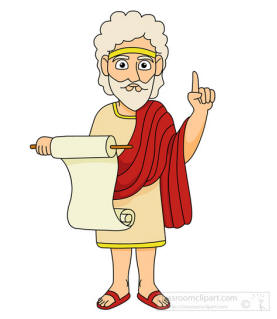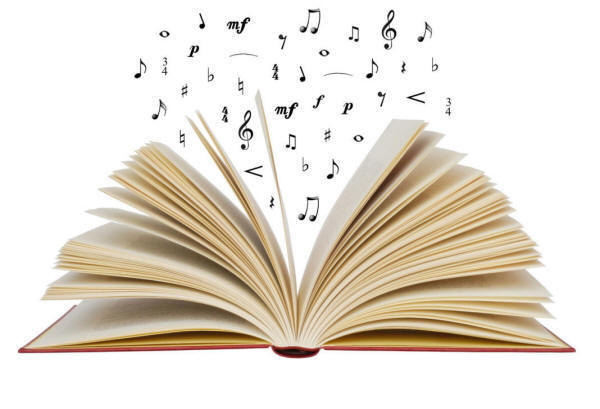|
Blooms
Canvas
Course Outline Grade
Calculator
Syllabus
Dyslexia,
Rhythm, and Advocacy for Music
Johnson PowerPoint
Lecture:
Dyslexia and Other Literacy Challenges
What is dyslexia?
It comes from two Greek words
dys
(difficult) +lexicos
(words of a language) =
dyslexia
(difficulty with words)
We may think of dyslexia as seeing letters
backwards, but the terms "dyslexia" and "specific reading
disorder" are now used interchangeably.
Definitions
From the 1981 Education Act:
Dyslexia: refers to any
difficulty of such a nature that the child requires
something more than, or different from the majority of other
children of the same age in order to benefit from the
education process.
From
The Dyslexia Handbook (Texas Education Agency),
dyslexia and related disorders are defined as:
Dyslexia:
a disorder of constitutional origin manifested by a
difficulty in learning to read, write, or spell, despite
conventional instruction, adequate intelligence, and
sociocultural opportunity.
Related
disorders: include disorders similar to or
related to dyslexia, such as developmental auditory
imperception, dysphasia, specific developmental
dyslexia, developmental dysgraphia, and developmental
spelling disability.
From
The International Dyslexia Association
Dyslexia
is a specific learning disability that is
neurobiological in origin. It is characterized by
difficulties with accurate and/or fluent word
recognition and by poor spelling and decoding abilities.
These difficulties typically result from a deficit in
the phonological component of language that is often
unexpected in relation to other cognitive abilities and
the provision of effective classroom instruction.
Secondary consequences may include problems in reading
comprehension and reduced reading experience that can
impede growth of vocabulary and background knowledge.
As you can imagine, there can be many
types of dyslexia and many causes.
There are many terms to
describe a whole range of learning difficulties.
Requirements for Educator Preparation Programs
According to TEC §21.044(b), all candidates completing an educator preparation program must receive
instruction in detection and education of students with dyslexia. This legislation ensures that newly certified
teachers will have knowledge of dyslexia prior to entering the classroom.
https://statutes.capitol.texas.gov/Docs/ED/htm/ED.21.htm#21.044
Sec. 21.044. EDUCATOR PREPARATION. (a) The board shall
propose rules establishing the training requirements a
person must accomplish to obtain a certificate, enter an
internship, or enter an induction-year program. The board
shall specify the minimum academic qualifications required
for a certificate.
(b) Any minimum academic qualifications for a certificate
specified under Subsection (a) that require a person to
possess a bachelor's degree must also require that the
person receive, as part of the training required to obtain
that certificate, instruction in detection and education of
students with dyslexia.
(c) The instruction under Subsection (b) must:
(1) be developed by a panel of experts in the diagnosis and
treatment of dyslexia who are:
(A) employed by institutions of higher education; and
(B) approved by the board; and
(2) include information on:
(A) characteristics of dyslexia;
(B) identification of dyslexia; and
(C) effective, multisensory strategies for teaching students
with dyslexia.
So . . .
Characteristics of
dyslexia
Difficulty reading words in isolation
Difficult accurately decoding
unfamiliar words
Difficulty with oral reading (slow,
inaccurate, or labored without prosody)
Difficulty spelling
See
The Dyslexia Handbook (pp.
2-4) for identifying behaviors by grade level
Symptoms and Signs of Dyslexia (Ages 1-7)
Identification of dyslexia
Screening
As a music educator, primary
responsibility for screening will not be you, but you should
be in conversation with classroom teachers. Screening is
mandatory (since 2017) in Texas schools at kindergarten and
first grade.
The
Surprising Connection Between Reading and Rhythm

Good news:
There is an 85% accuracy of screening
children in mid-kindergarten.
.
Bad news:
If intervention is not provided before the
age of 8, the probability of reading difficulties continuing
into high school is 75%.
A child's phonology (speech-sound
system) is usually developed by age 8.
Effective, multisensory
strategies for teaching students with dyslexia
One might think that a focus on
notation would be of significant value to dyslexic students.
Actually, research findings point to rhythmic skills as
being the most beneficial.
The inability to keep a steady beat can be an early marker
for preschool children who are at risk for difficulties in
learning to read. But, music training has been shown to lead
to improvements in phonological, reading, and spelling
skills for students with dyslexia.
Rhythm training helps
students with dyslexia read better and more fluently and
that in turn DOES assist in reading notation. Tracking is a skill that is often
difficult for those with dyslexia, and can be improved by
reading rhythms.
And, a note here, that this is an important point to
advocate for NOT taking students out of music for remedial
reading.
Perception of patterns of musical beat distribution in
phonological developmental dyslexia: Significant
longitudinal relations with word reading and reading
comprehension
Conclusions:
The non-linguistic musical beat structure task is an
important independent longitudinal and concurrent predictor
of variance in reading attainment by children. The different
longitudinal versus concurrent associations between musical
beat perception and auditory processing suggest that
individual differences in the perception of rhythmic timing
are an important shared neural basis for individual
differences in children in linguistic and musical
processing.
Neural Entrainment and Sensorimotor Synchronization to the
Beat in Children with Developmental Dyslexia: An EEG Study
Tapping in time to a metronome beat
(hereafter beat synchronization) shows considerable
variability in child populations, and individual differences
in beat synchronization are reliably related to reading
development. Children with developmental dyslexia show
impairments in beat synchronization.
These impairments may reflect deficiencies in auditory
perception of the beat which in turn affect auditory-motor
mapping, or may reflect an independent motor deficit. Here,
we used a new methodology in EEG based on measuring
beat-related steady-state evoked potentials (SS-EPs,
Nozaradan et al., 2015) in an attempt to disentangle neural
sensory and motor contributions to behavioral beat
synchronization in children with dyslexia. Children tapped
with both their left and right hands to every second beat of
a metronome pulse delivered at 2.4 Hz, or listened passively
to the beat. Analyses of preferred phase in EEG showed that
the children with dyslexia had a significantly different
preferred phase compared to control children in all
conditions. Regarding SS-EPs, the groups differed
significantly for the passive Auditory listening condition
at 2.4 Hz, and showed a trend toward a difference in the
Right hand tapping condition at 3.6 Hz (sensorimotor
integration measure). The data suggest that neural rhythmic
entrainment is atypical in children with dyslexia for both
an auditory beat and during sensorimotor coupling (tapping).
The data are relevant to a growing
literature suggesting that rhythm-based interventions may
help language processing in children with developmental
disorders of language learning.
The article above was co-authored by Usha Goswami, Professor
of Cognitive Developmental Neuroscience at Cambridge.
She has studied dyslexia in children for over a decade. In
interviews, she states that dyslexia is not caused by an
intrinsic reading disability, but by the children's
"inability to hear the rhythm of words when spoken."
Read her interview below:
https://www.mia.org.uk/2019/05/dyslexia-can-be-overcome-with-nursery-rhymes-and-music-says-cambridge-professor/
|
|
|
Vocabulary
dyslexia
prosody
morpheme
orthography
automaticity
neuroplasticity
grapheme
dyspraxia
dysphasia
aphasia
morphology
Increased vocabulary |
|
2-minute applications
Elementary
-
Walking to a steady drumbeat when
entering and exiting the music classroom
-
Keeping the beat with rhythm sticks
while singing a song
-
Finger tracking the words to a song
while singing
-
Nursery rhyme song of the day
Secondary
-
Students tap the beat on their knees
while listening to another section play
-
Finger tracking the notes of a specific
part while listening
-
Finish the line with a rhyming word
Private
|
|
Topics for discussion
-
xx
|
|
Assignments |
|
|
Doyle, J., Dyslexia: An introductory guide, 2nd
edition. Whurr Publishers, London 2002.
The Dyslexia Handbook
Page 1. For additional product details, please visit
https://www.wiley.com/en-us Dyslexia: Biology,
Cognition and Intervention Charles Hulme (Editor),
Margaret J. Snowling (Editor)
Created and maintained by Vicky V. Johnson
 | 

